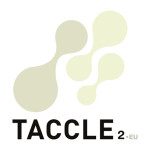Another gem from Dan Roberts who says
“I’ve only just started using Essay Map in the classroom and already I love it. Many of the students I teach find it difficult to write and structure an essay; actually even I do. Essay Map is a brilliant tool which works as an interactive graphic organiser that walks you through the process of writing an essay. You fill in the boxes as you go and then you can save it, print it or even email it when you’re finished.”

How to use Essay Map in the classroom
1. This is a great tool to use with lower ability students who find it difficult to structure essays. These pupils found it much easier to create the essay with less support from me and it made them feel more independent.
2. Some groups of children, particularly boys, don’t enjoy writing essays and I’ve found Essay Map can engage those students who don’t like completing an essay on paper.
3. Get students to complete the essay plan using the tool then email it to a partner or a group and get students to peer assess and give feedback on each other’s work. Then get the students to complete a final draft taking on board the feedback.
4. Use the essay-creating tool as a chain. Get one student to complete the first part (eg the title and intro) and then pass it on to another student who completes the next part and so on. By the end of the lesson you have a collaborative essay.
If you have a go at using Essay Map please leave a comment letting us know how you used it and what the impact on learning was in your classroom.




 English
English Nederlands
Nederlands Deutsch
Deutsch Italiano
Italiano Español
Español Português
Português Română
Română Cymraeg
Cymraeg
Ho usato Essay Map in classe e devo dire che ha avuto un impatto sorprendente nei ragazzi. In primo luogo perché anche quelli che non hanno difficoltà nella scrittura a volte mostrano insicurezza nella pianificazione generale del testo, che alla fine ha sempre “qualcosa che non va”, sia nella coerenza che nell’organicità rispetto alla traccia proposta. E’ inoltre vero che la costruzione di una scaletta nella quale raccogliere le idee e organizzarle in maniera logica, richiede abilità che si acquisiscono con il tempo. Dunque è sempre bene abituarli a progettare con uno schema che metta subito in evidenza i legami tra le parti del testo (introduzione, svolgimento, conclusione), come pure a raccogliere, in ognuna di queste parti, idee coerenti tra loro. Per i ragazzi che invece stentano a trovare idee e pareri, esprimendoli poi in una forma poco chiara e corretta, la compilazione della mappa in ogni sua parte li può stimolare a trovare comunque qualcosa da dire, che sarà poi rielaborato anche se in forma molto semplice.
Really useful comment from Francesca. I just ran it through Google translate and found the stuff around gender differences very interesting.
Francesca says:
“Essay Map I used in class and I have to say that it had a surprising impact with boys. Firstly, because even those who have difficulty in writing, sometimes show insecurity in the overall planning of the text, which in the end always has ” something wrong ” , which is consistent with ‘respect to the proposed path organicity’ . It is also true that the construction of a ladder in which to gather ideas and organize them in a logical manner requires skills that are acquired with time. So it is always good to get them used to designing with a pattern that immediately puts in evidence the links between parts of the text (introduction, implementation, conclusion ) , as well as to collect, in each of these parts , ideas consistent with each other. For boys, it is sometimes difficult to find ideas and opinions, and to express them in a form that is clear and correct. Compilation of the map in its entirety can stimulate them to find something to say that can then be reworked albeit in a very simple way.